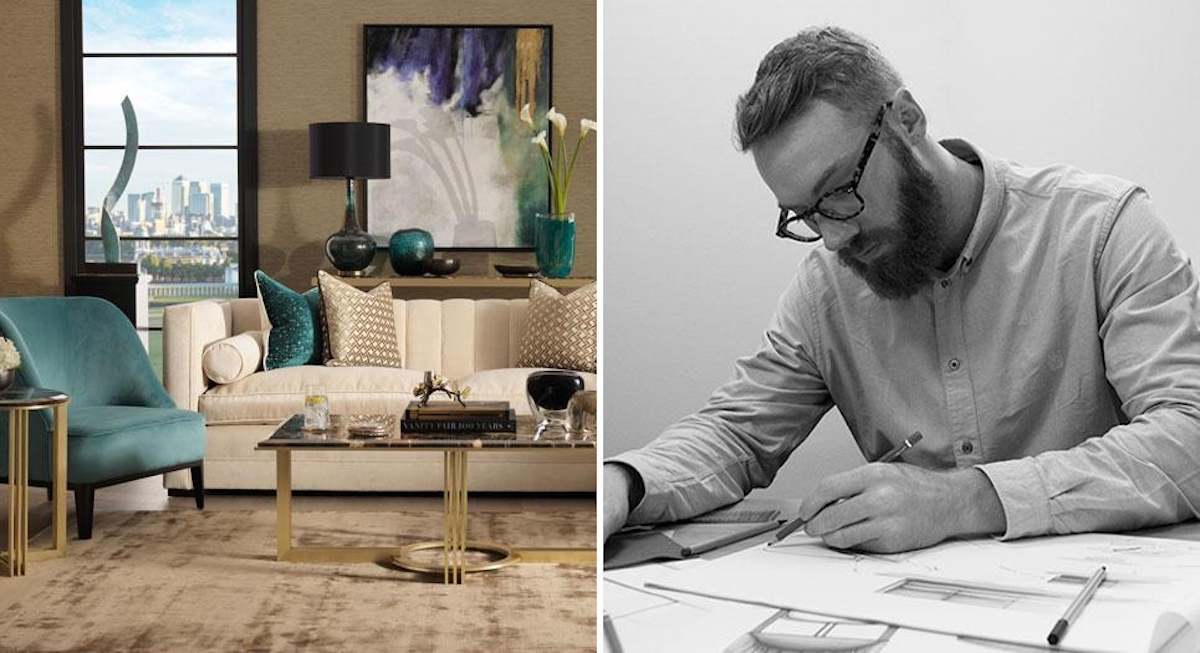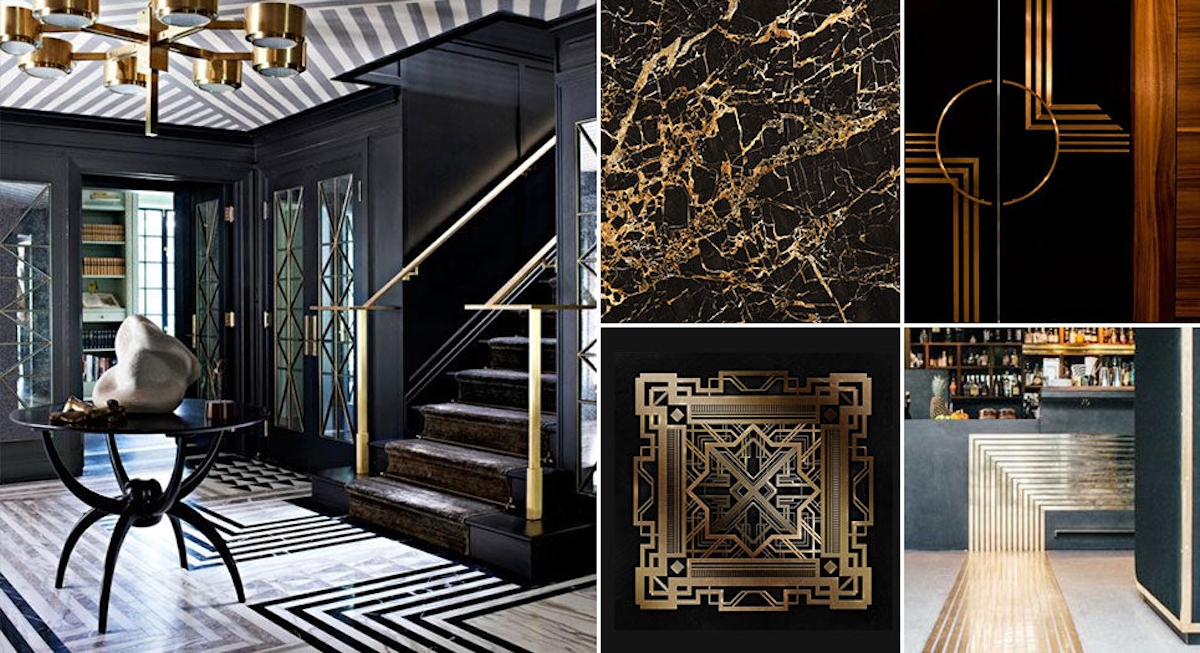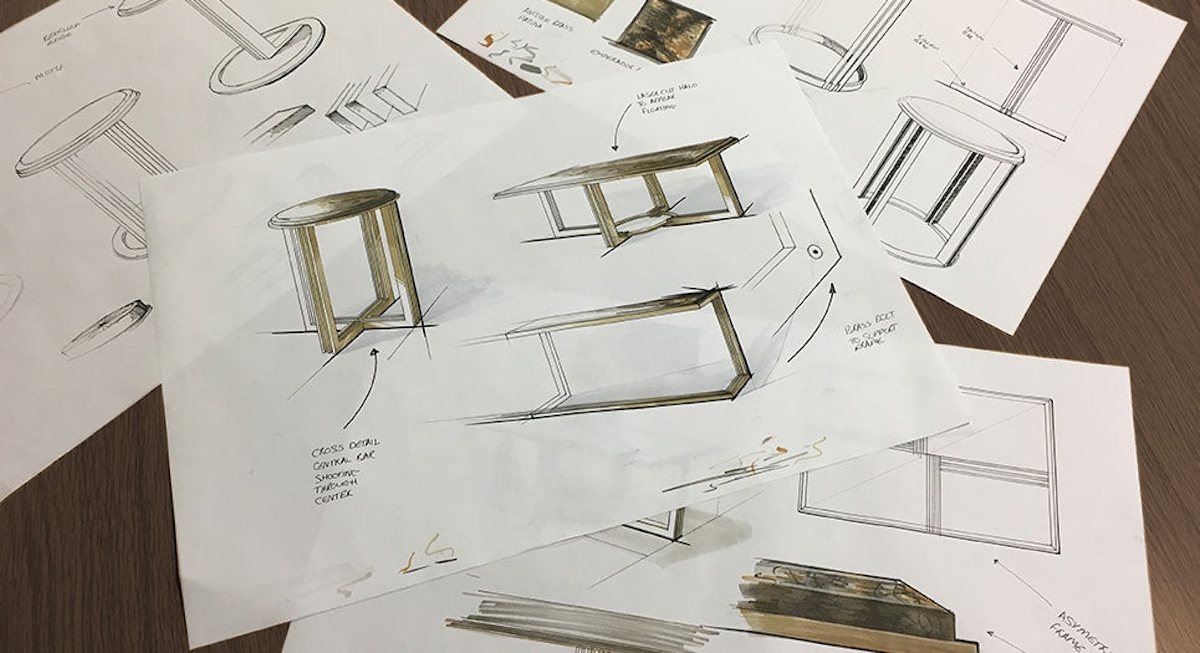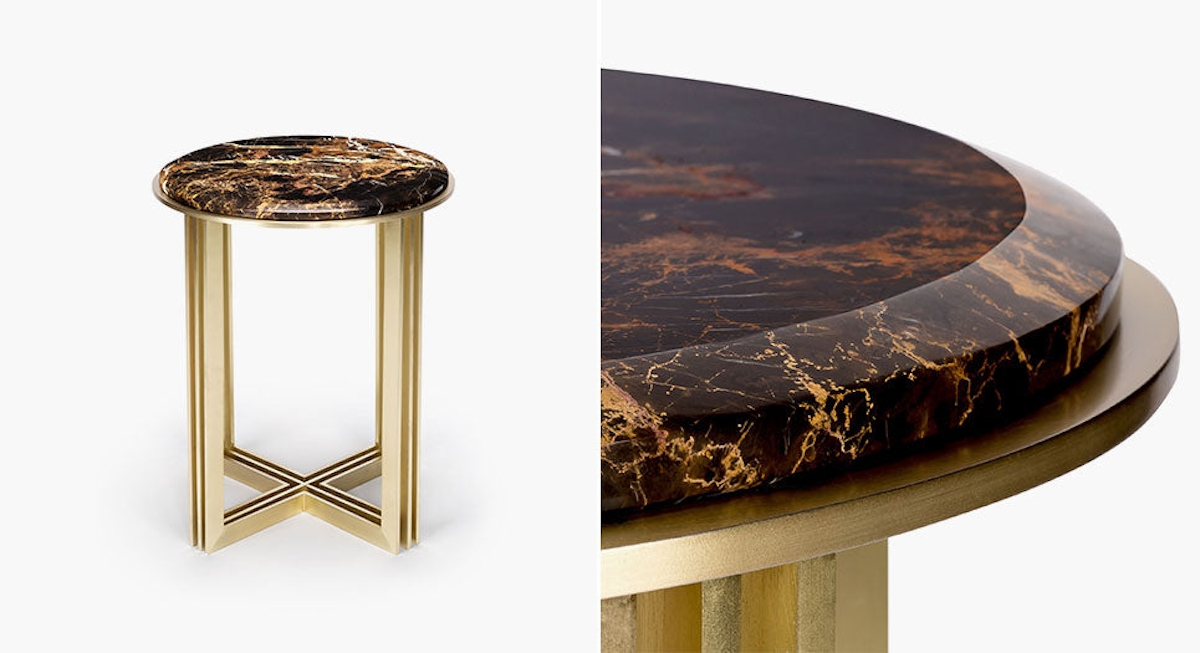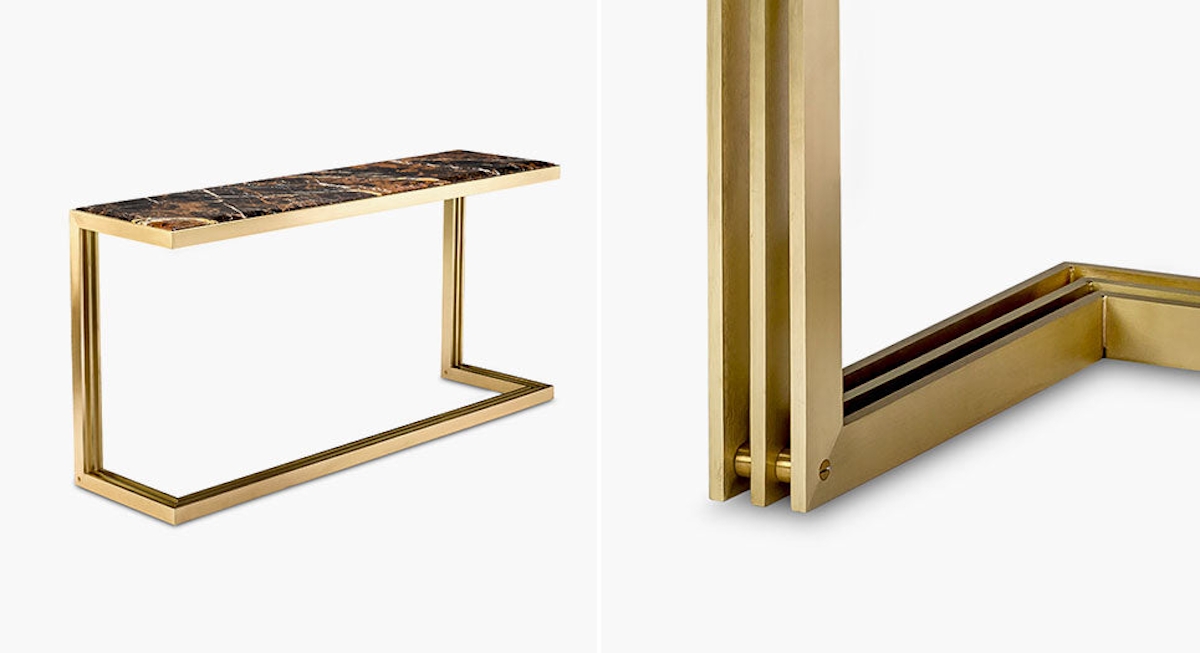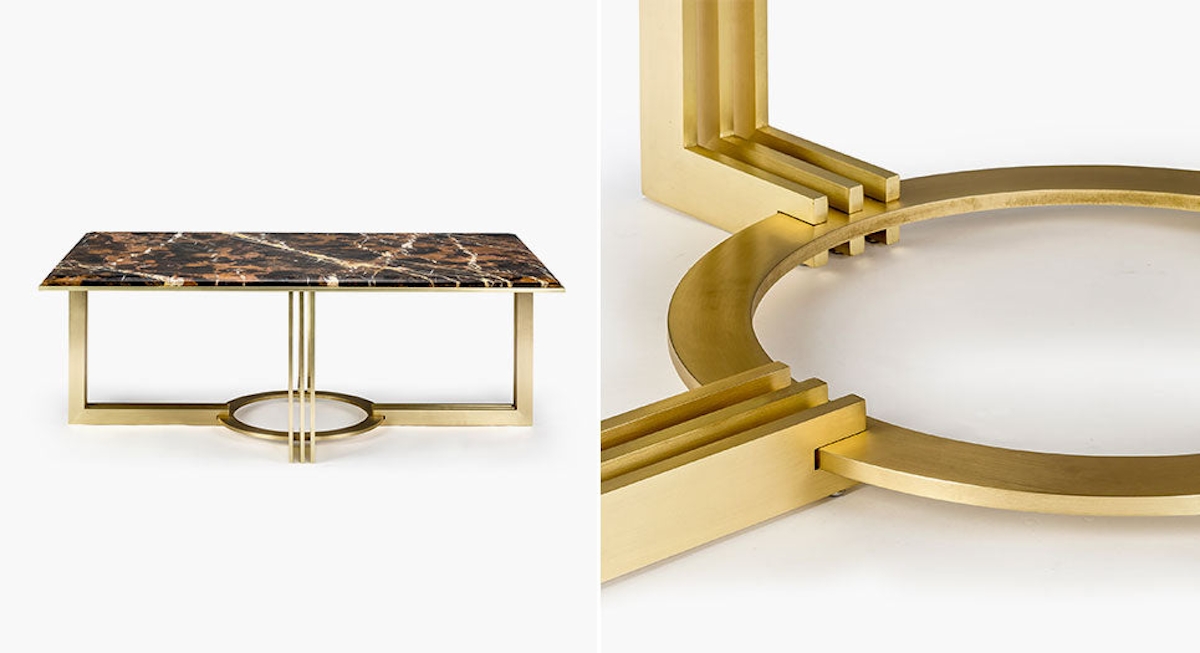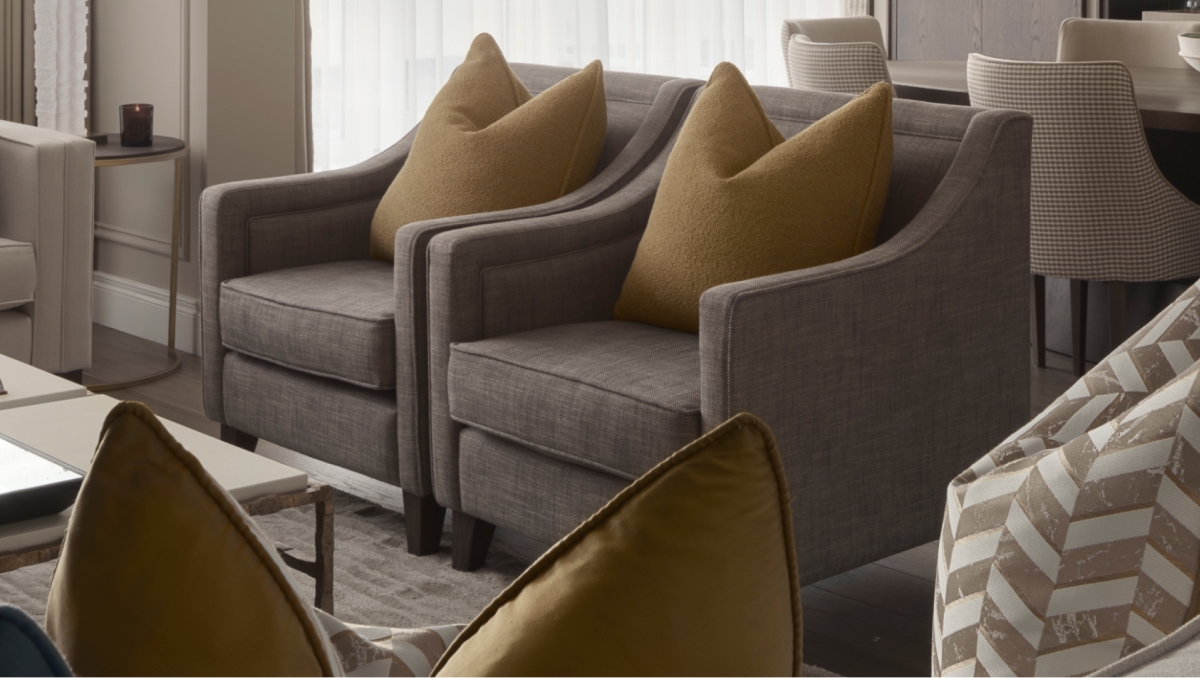In a collaborative effort between LuxDeco’s design team and the artisans at British studio Thomas James Furniture, the Orion range rebirths a graphic Art Deco motif in powerful 21st-century form. Consisting of an equally sleek marble-topped console, coffee and side table, it’s a triple-threat line-up that balances the art of understated beauty with serious head-turning appeal.
From design influences to material choices and the subtle details of the range, LuxDeco’s Head Designer, Sam Aylott, discusses the making of the exclusive table set.
